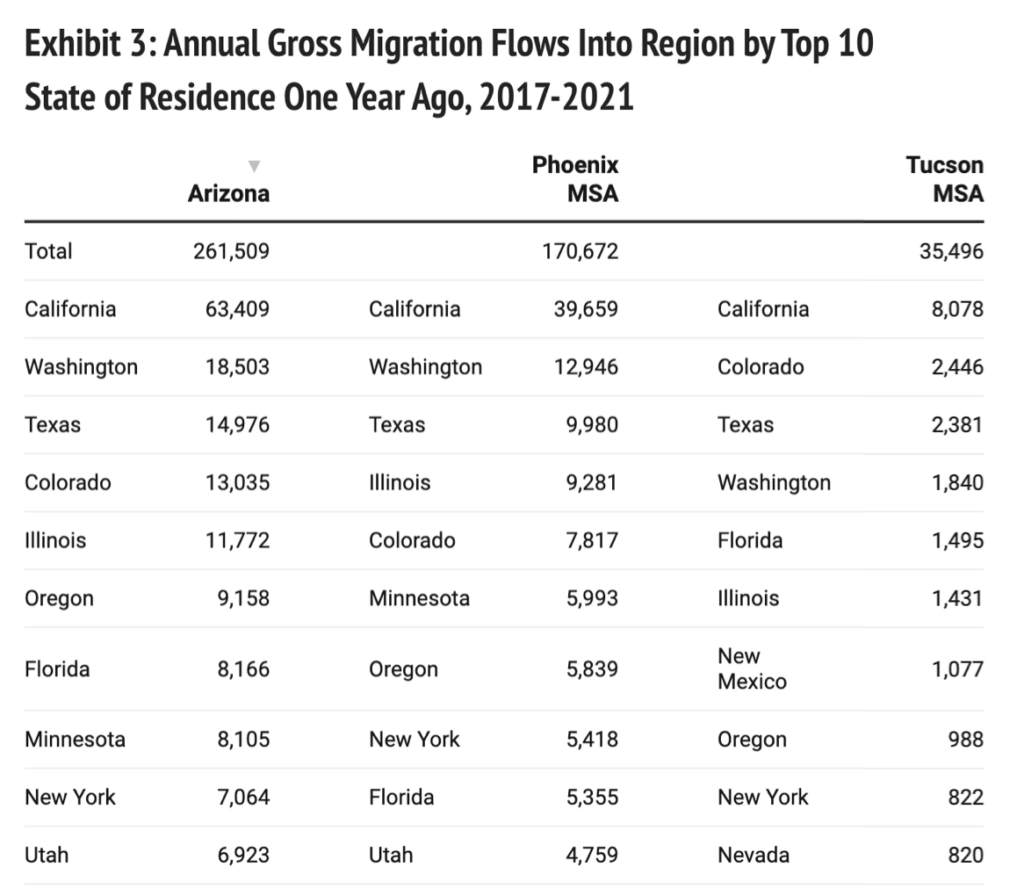Wondering how many Californians have moved to Arizona in the last few years? Or what states send the most new residents and migrants to Arizona? Roughly 64,000 Californians moved to Arizona annually during 2017-2021.
LEARN MORE: 132 Arizona companies make Inc. 5000 list for 2023
Population growth plays a crucial role in bolstering Arizona’s economic well-being. A growing population fosters increased consumer demand, stimulates business expansion, and attracts investments in various sectors. A larger labor force infused with diverse talents and skills strengthens the Arizona’s competitiveness, paving the way for innovation and sustainable economic growth.
Net migration has long been a key source of Arizona’s population growth, usually contributing much more than natural increase (births minus deaths). As the baby boom generation ages, it will put downward pressure on natural increase and thus make net migration increasingly important.
What states send the most migrants to Arizona? We can get a good idea from the U.S. Census Bureau’s American Community Survey. Their five-year estimates for the 2017-2021 period show that Arizona drew migrants from every state in the nation. It’s also clear that California sent by far the most migrants of any state.
Exhibit 2 shows how domestic migrants to Arizona were distributed across Census regions. As the exhibit shows, during the 2017-2021 period 261,509 migrants moved to Arizona each year on average. Most of those migrants came from the West (137,489 or 52.6%), followed by the Midwest (20.7%), South (19.2%), and Northeast (7.6%). The distribution was fairly similar for migrants to the Phoenix MSA and the Tucson MSA.

Exhibit 3 shows the top 10 states that contributed domestic migrants to Arizona. During the period, California contributed by far the most migrants to the state, Phoenix, and Tucson. California alone accounted for 24.2% of domestic migrants to the state, 23.2% for Phoenix, and 22.8% for Tucson.

Author: Delaney O’Kray-Murphy is an Economic and Business Research Center research economist.




